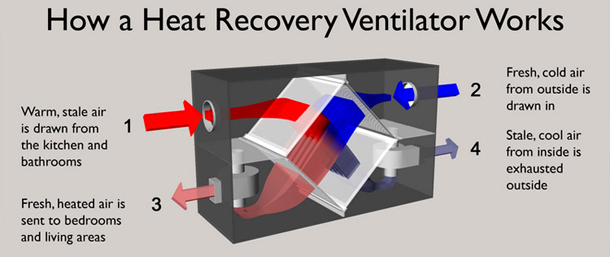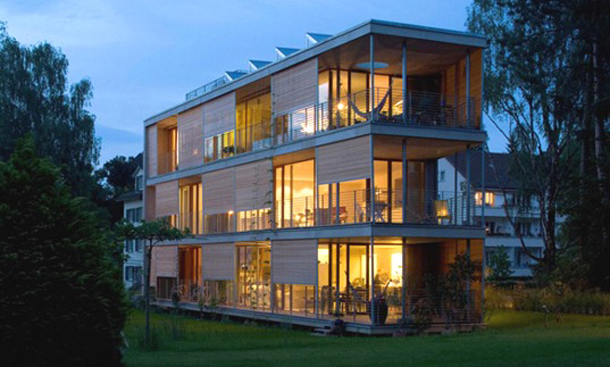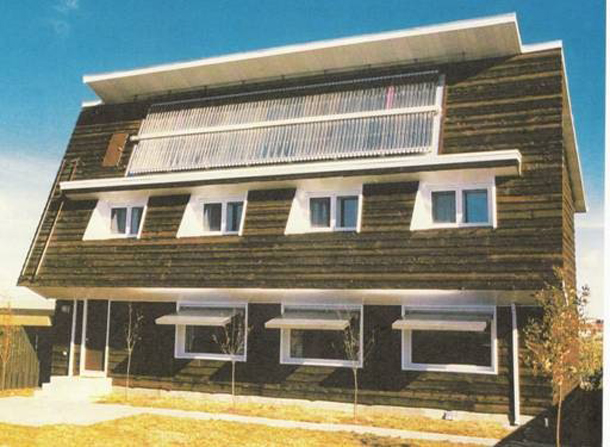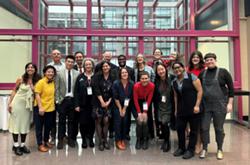The home of the future was built 34 years ago in Regina. It was called the Saskatchewan Conservation House. It used less than a fifth of the energy consumed by comparable homes. More than 30,000 people came to see it. But Canadian homebuilders ignored the ideas it offered, and the Canadian public forgot about it.
The world would have forgotten the Saskatchewan house, too, were it not for a quirky German physicist interested in energy-saving buildings. After studying the Saskatchewan house and a handful of similar buildings, Dr. Wolfgang Feist wrote a mathematically precise -- and elegantly simple -- criterion for designing buildings that require less than a tenth of the energy of average buildings. He called it the Passivhaus standard.
Feist's formula has gone viral. There are now more than 25,000 certified Passivhaus buildings in Europe, and thousands more under construction around the world.
But, here in Canada? There's just one.
Sans furnace in Saskatchewan
The Saskatchewan Conservation House was built in 1977 by the Saskatchewan Research Council, with support from partners including the University of Regina and the University of Saskatchewan.
It was built without a furnace. Instead, the northwest Regina home features a nearly airtight envelope with R-40 wall insulation and R-60 roof insulation. This enables a small hot water system to heat the house, even through the winter.
The house is cube-shaped to expose a minimum amount of exterior surface area per square foot of floor space. Dark-brown cedar siding enables the house to absorb heat from the sun. And deciduous trees on the south side of the house provide shade in summer and allow solar heat to enter the windows in the winter.
Together with the "Lo-Cal House" at the University of Illinois and the "Leger House" in Massachusetts (both of which were built about the same time) the Saskatchewan house was among the earliest conservation demonstration projects in North America. American physicist William Shurcliff summarized the common elements of these cutting-edge buildings in a 1979 paper.
"Truly superb insulation," Shurcliff observed. "Not just thick, but clever and thorough. Excellent insulation is provided even at the most difficult places: sills, headers, foundation walls, windows, electric outlet boxes, etc."
Shurcliff continued: "Envelope of house is practically airtight... No conventional furnace... No weird shape of house, no weird architecture." And he noted how these buildings were pointing the way toward affordable green homes.
"No big added expense," he wrote. "The costs of the extra insulation and extra care in construction are largely offset by the savings realized from not having huge areas of expensive [windows], not having huge well-sealed insulating shutters for huge south windows, and not having a furnace or a big heat distribution system."
After the researchers finished their monitoring and the curious departed, the Saskatchewan house was sold as a residence. A garage was later added at the back of the property, and the solar thermal collectors were removed once maintenance became untenable.
Guido Wimmers, a Passivhaus consultant who trained in Europe but now lives in Vancouver, visited the house a few years ago. Wimmers was surprised to find that the current owner knew little of the home's legacy.
"He was somewhat aware that his house is a little bit special," Wimmers said. "But he was not aware that his house is actually kind of a milestone in building history."
Airtight buildings that sip energy
A decade passed before professors Bo Adamson and Wolfgang Feist began refining the concepts pioneered in Saskatchewan, Illinois and Massachusetts into what would become the Passivhaus standard.
"[Adamson] insisted on really building one," Feist told journalist Martin Holladay in a 2007 interview. "At the time we knew about other similar buildings -- buildings made by William Shurcliff and Harold Orr -- and we relied on those ideas."
They coined the term "Passivhaus" to express the idea that these buildings would include no traditional "active" heating or cooling systems. The first building, a row of four townhouses, was built in Darmstadt, Germany in 1990.
Feist founded the Passivhaus Institute in 1996. And from 1997 to 2002 he conducted a research project called CEPHEUS (Cost-Efficient Passive Houses as European Standards), which collected data on 221 superinsulated housing units at 14 locations in five countries.
At the heart of the Passivhaus standard are two requirements:
1. Every building must pass a blower-door test demonstrating exceptional airtightness. The Passivhaus airtightness standard (0.6 AC/H @ 50 Pascals) makes the Canadian R-2000 standard (1.5 AC/H @ 50 Pa) look lax by comparison.
2. Every building must consume no more than 15 kilowatt-hours of energy per square meter of floor area. While R-2000 and most other green building standards govern only energy used for heating and cooling, the Passivhaus standard applies to all energy -- including lights, appliances, entertainment and hot water heating.
How a building meets these performance requirements is left to the discretion of its designers and builders. However, it is not possible to meet the Passivhaus airtightness standard using windows and doors manufactured to lax North American standards. They leak too much air. So triple-paned windows manufactured to the Passivhaus standard are de facto requirements. Likewise, it is virtually impossible to meet the Passivhaus energy requirement without superinsulated roofs, walls and foundations. Wood-framed buildings usually have 16-inch-thick walls.

The Passivhaus Institute therefore recommends a short list of strategies for achieving its standards. These include: high levels of insulation, reduction of thermal bridges, use of "energy-gain" windows and (shown above) a heat-recovery ventilator (HRV).
'Green building is Passivhaus'
"Forget Energy Star and LEED," the influential blog TreeHugger declared last year, "Green building is Passivhaus."
Among Europe's more than 25,000 certified Passivhaus buildings are homes, school, office buildings and a supermarket. And a growing number of local governments are incorporating variations of the Passivhaus standard into their building codes.

The boxy first-generation Passivhaus buildings have evolved into elegant suburban apartment buildings such as the one shown above in Bern, Switzerland, and natural country homes such as this one in France.
Still on the boards is a Passivhaus tower in Austria. At 30 stories, it promises to become the tallest wooden building in the world.
The Passivhaus standard has taken root in the U.S. more recently.
Semantic confusion may partly explain the delay. Since the 1970s, the phrase "passive solar house" has been used in the U.S. and Canada to describe houses with extra thermal mass and big south-facing windows. Such homes are the antithesis of Passivhaus. Indeed, after decades of computer modeling and field monitoring, engineers at the Passivhaus Institute have concluded that passive solar design is far less significant than airtightness and insulation value. Nonetheless, aging advocates of that problematic design approach insist on using the terms interchangeably, thereby fostering confusion. The first building in the U.S. that aimed to meet Passivhaus standards was a home built by architect Katrin Klingenberg in Urbana, Illinois, in 2003. Klingenberg subsequently founded the nonprofit Passive House Institute US.
Klingenberg's houses are remarkably affordable, costing only about 10 per cent more to build than comparable code-minimum construction. "The real cost advantage occurs... when the standard HVAC system can be eliminated. It is then replaced by a smaller ventilation system, a so-called fresh-air furnace. This system's significantly reduced ductwork is used to deliver the remaining 10 per cent of heating and cooling needs."
Among the two-dozen-odd American Passivhaus projects are this Salt Lake City home, and this New York City office building.
Canada, on the other hand, has turned its back on the Saskatchewan Conservation House, in much the same way it abandoned the Avro Arrow and the TurboTrain.
There is only one certified Passivhaus in Canada. Click here to read all about it. ![]()

















Tyee Commenting Guidelines
Comments that violate guidelines risk being deleted, and violations may result in a temporary or permanent user ban. Maintain the spirit of good conversation to stay in the discussion.
*Please note The Tyee is not a forum for spreading misinformation about COVID-19, denying its existence or minimizing its risk to public health.
Do:
Do not: